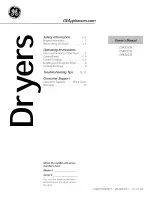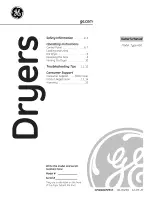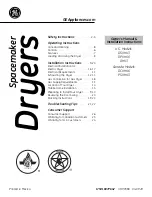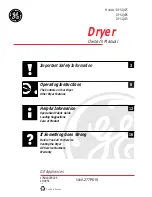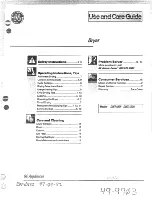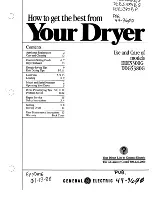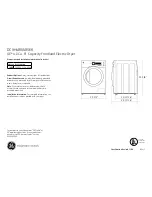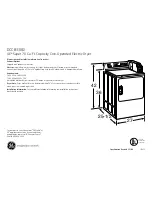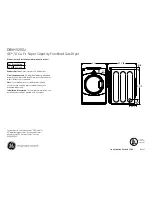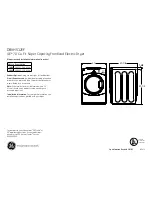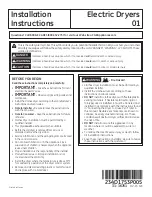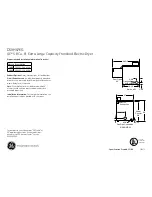
1 0
INITIAL STEPS FOR INSTALLING YOUR DRYER
Part 3
In addition to the following warnings, please refer
to manual section on Exhaust Requirements and
Maintenance.
IMPORTANT:
To reduce the risk of
fire, combustion, and gas accumulation, the dryer
must be vented to the outdoors. Please follow the
instructions (and all others in this manual) very
carefully.
ALTERNATE EXHAUST DIRECTIONS
1.
Remove a screw and exhaust duct.
Do not use thin plastic or foil ducting.
Use 4" (10.2 cm) diameter rigid or flexible metal
duct (note: venting materials are not supplied with
the dryer, and you should obtain the venting
materials necessary for proper installation)
Position the Dryer such that the exhaust duct run is
as short as possible.
Clean old ducts before installing this dryer
The male end of each section of exhaust duct must
point away from the dryer
Use as few elbow joints as possible.
Use duct tape on all duct joints
Insulate ductwork that runs through unheated
areas in order to reduce condensation and lint
build-up on pipe walls; and
PLEASE BE AWARE THAT FAILURE TO
EXHAUST THE DRYER CORRECTLY WILL
VOID THE DRYER S WARRANTY.
2-1.
Detach and remove the knockout that
matches the desired venting direction
(Right side not available on Gas Dryers)
,
,
the order of work.
2-2.
Reconnect the duct to the blower
housing and attach the duct to the
base.(Duct is a SVC part)
3-1.
Pre-assemble 4" elbow with 4" duct.
Wrap duct tape around joint.
3-2.
Insert elbow duct assembly first through the
side opening and connect the elbow to the
internal duct.
Connecting the Exhaust
and Venting System.
Use a heavy metal vent.
Do not use a plastic vent.
Do not use a metal foil vent.
Failure to follow these instructions can
result in death or fire.
Clean old ducts before installing this dryer
WARNING!
STEP 3
Note
Vent end will face to the outside home and
improper taping and unstable installation of vent
will cause undesirable drying performance.
Summary of Contents for TDW15116G
Page 32: ...32 MEMO ...
Page 64: ...32 MEMO ...



























